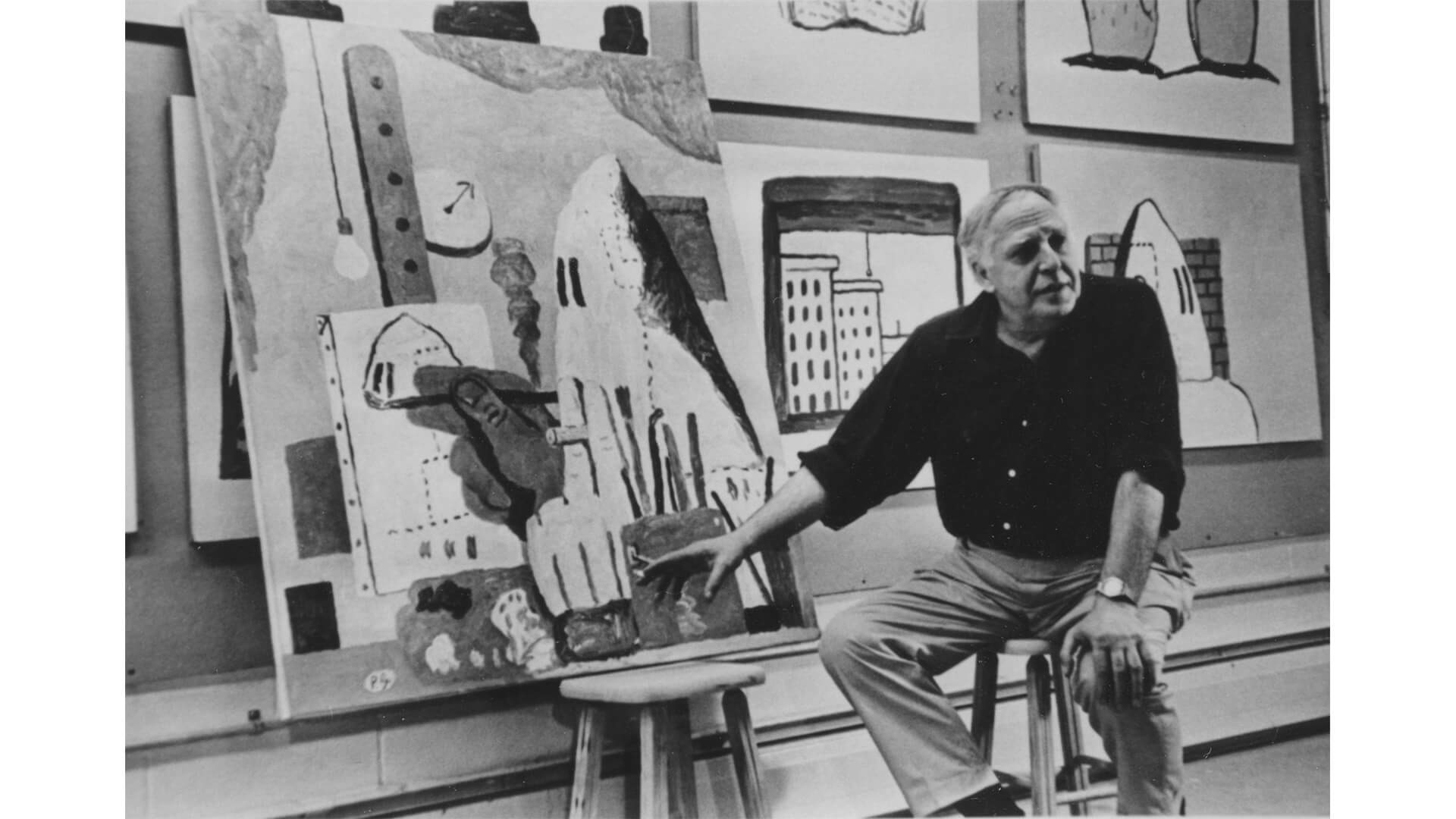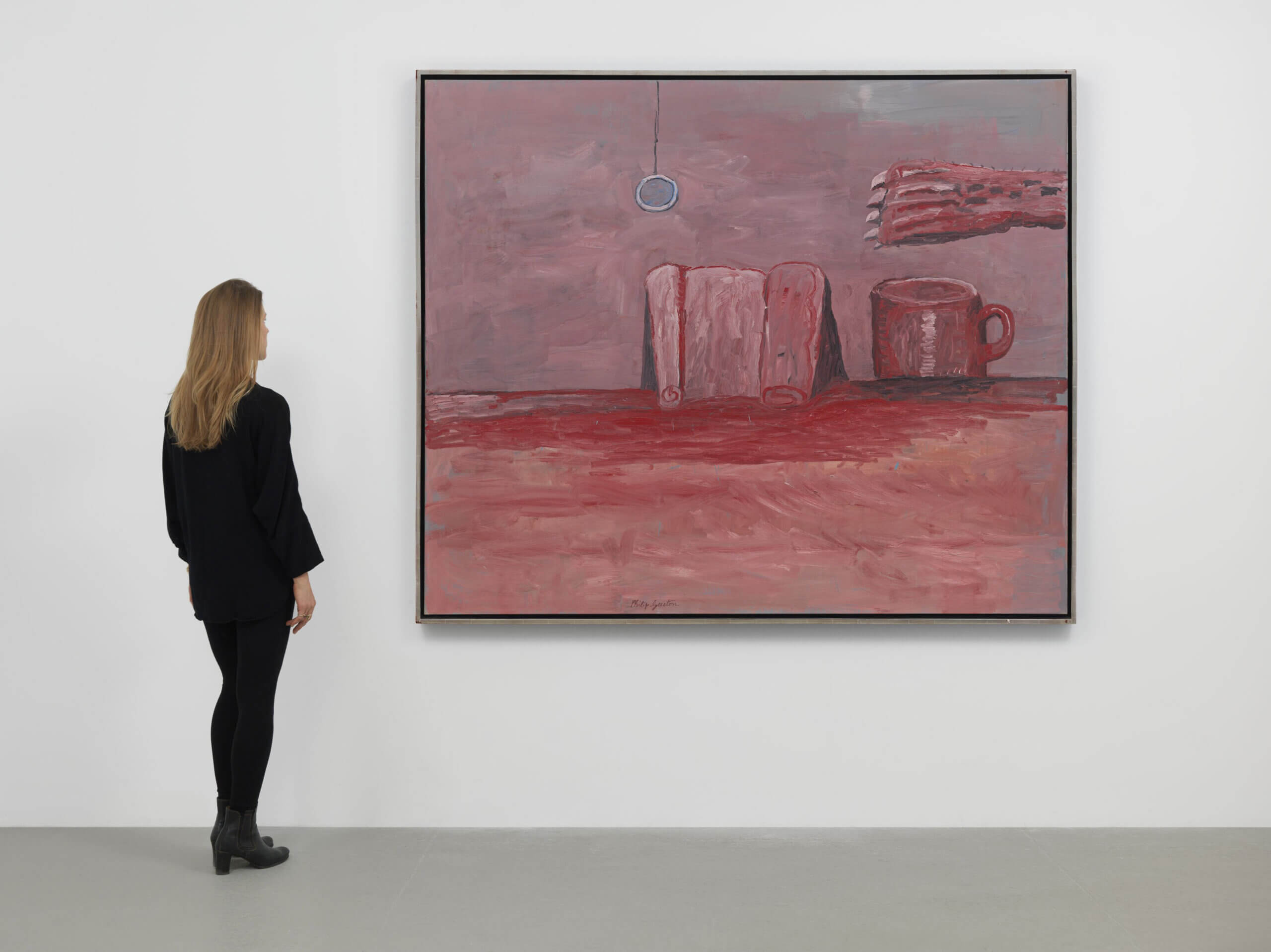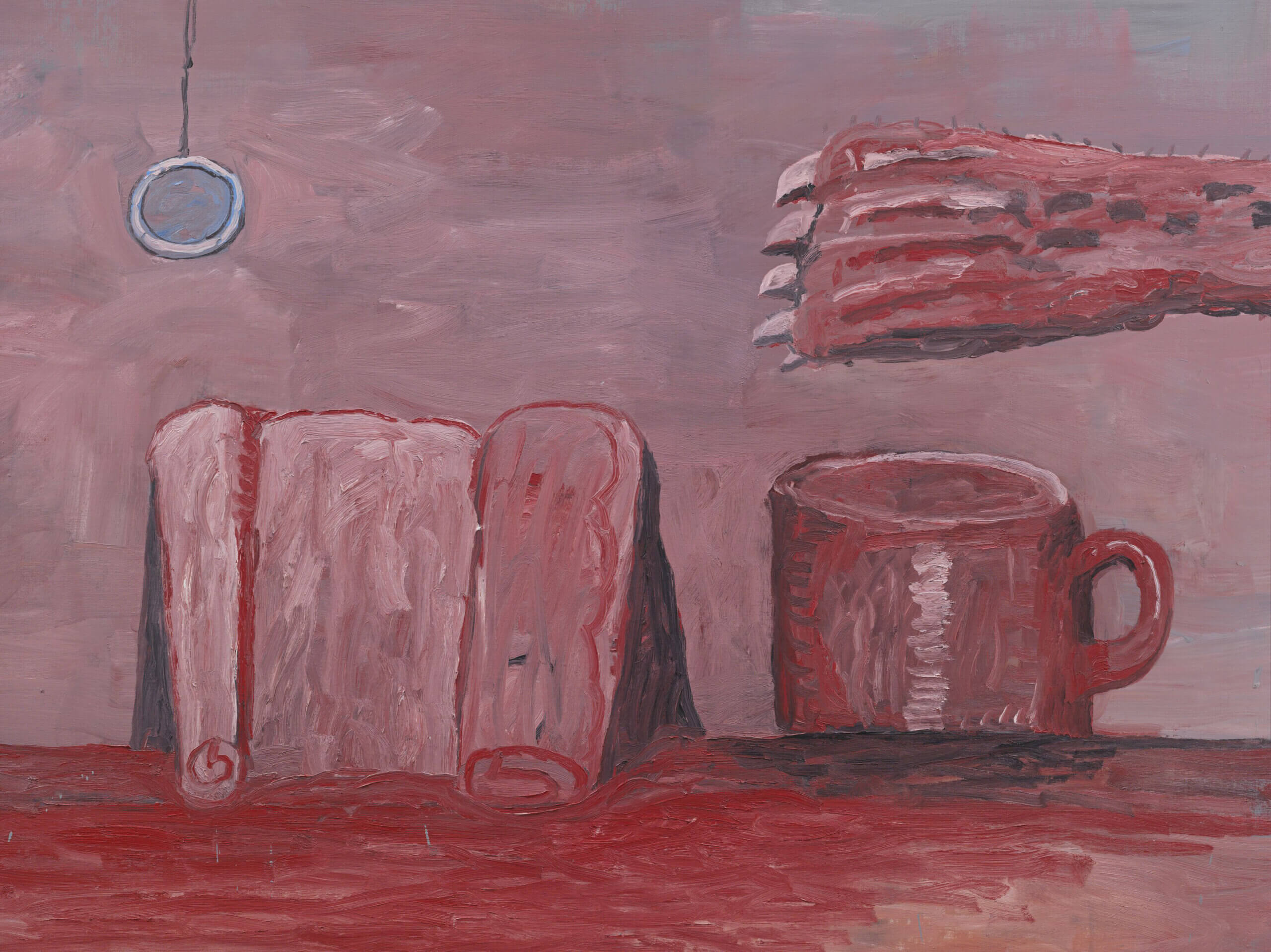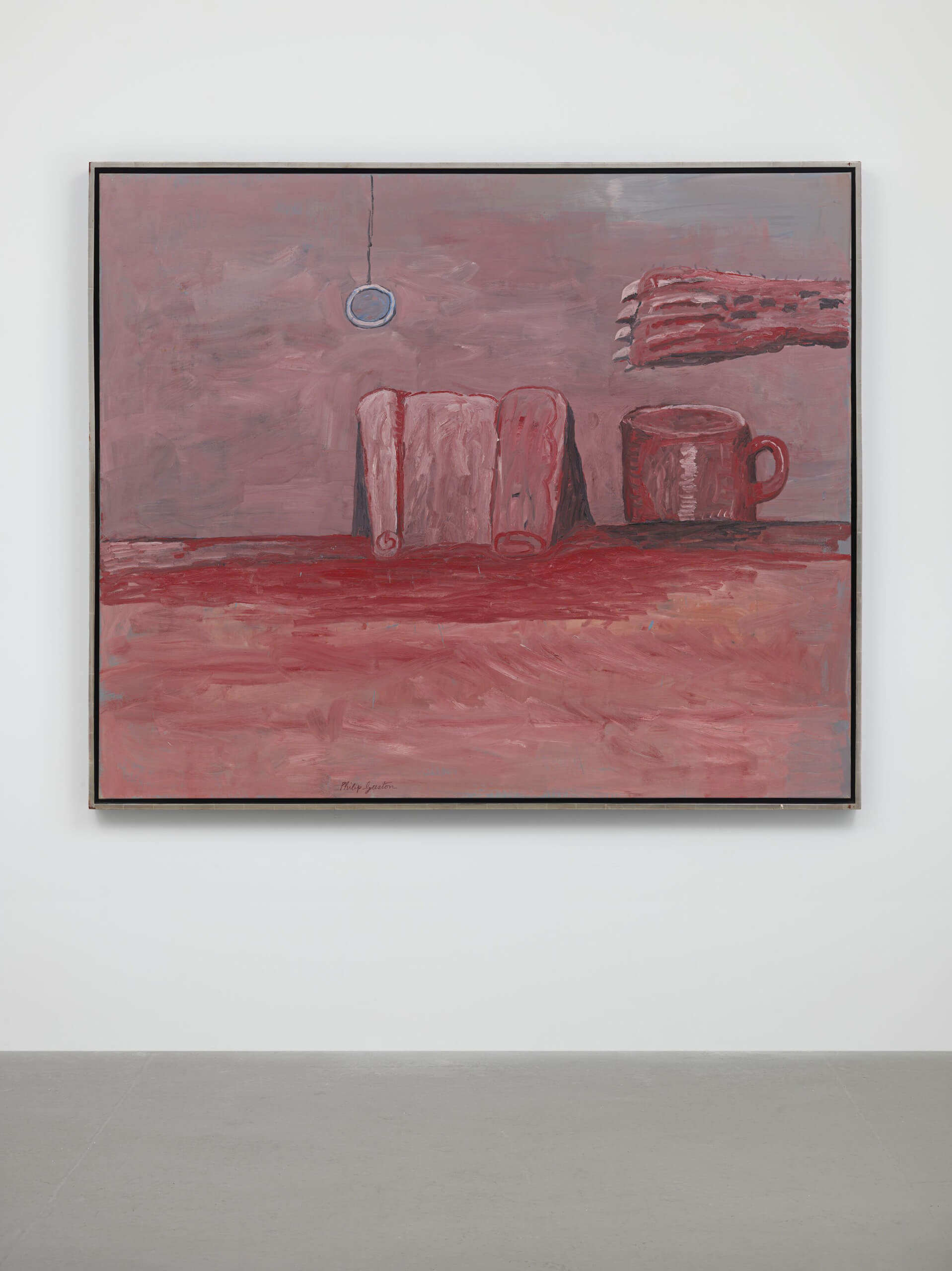
Philip Guston
Paw II
Paw II
1975 Oil on canvas 170.2 x 203.2 cm / 67 x 80 in 175.3 x 208.3 x 5.1 cm / 69 x 82 x 2 in (framed)
Painted in 1975, Philip Guston’s ‘Paw II’ was created among a proliferation of paintings and drawings that constitute his late works, from 1973 leading up to his death in 1980. As with much of Guston’s oeuvre, the paintings during this last phase explore existential themes that preoccupied him throughout his career— the surrealistic, grotesque, intimate and ‘the real’— expressed with a riveting sense of unmoored freedom, absurdity and darkness, tenderness and anxiety. They also proposed a renewed vigour in his practice.
'I remember very distinctly that it happened quickly, maybe five or ten minutes of painting. The right accent in the right place, and then the dots on the paw... the proportions it took began to push it away from the human and it became an animal’s hand, or partial. A beast’s hand. And when it was done I looked at it and my heart started beating and I started to get very excited.'—Philip Guston

During a period of reassessment and foment, from 1966 to 1968, Guston began to think about prehistoric human evolution and how drawing gave way to visual language. Transposing this thought into his practice, he challenged himself to reset his abilities, creating crude lines and rudimentary renderings of everyday objects. This concept revealed itself as a central tenant of his artistic evolution, exemplified by ‘Paw’ and 'Paw II' in their own paradoxical suggestions of progression through regression: one in its pink-hued proposal of immediacy and simplicity, and the other, a revisitation in a red and murky blue palette, monstruous and animalistic in character.

Manifesting in the same transmutable space dominated by registers of red and smoky blue, the compositions that emerged from this vital surge of activity in 1975, including ‘Paw II’, ‘The Lesson’ and ‘Driver’, convey the emotional process of bearing witness and coping with the inevitability of death, combining metaphysical and physical space. Depicted in a setting that merges the intimate sphere of Guston’s studio with a wasteland or netherworld, ‘Paw II’ emphasizes the notion of transformation by directly referencing his earlier painting, ‘Paw’, from 1968, which, in its evocation of a tabula rasa, marked a breakthrough in Guston’s return to figurative work.

Philip Guston
Philip Guston (1913 – 1980) is one of the great luminaries of twentieth-century art. His commitment to producing work from genuine emotion and lived experience ensures its enduring impact. Guston’s legendary career spanned a half century, from 1930 to 1980. His paintings – particularly the liberated and instinctual forms of his late work – continue to exert a powerful influence on younger generations of contemporary painters.
© The Estate of Philip Guston


